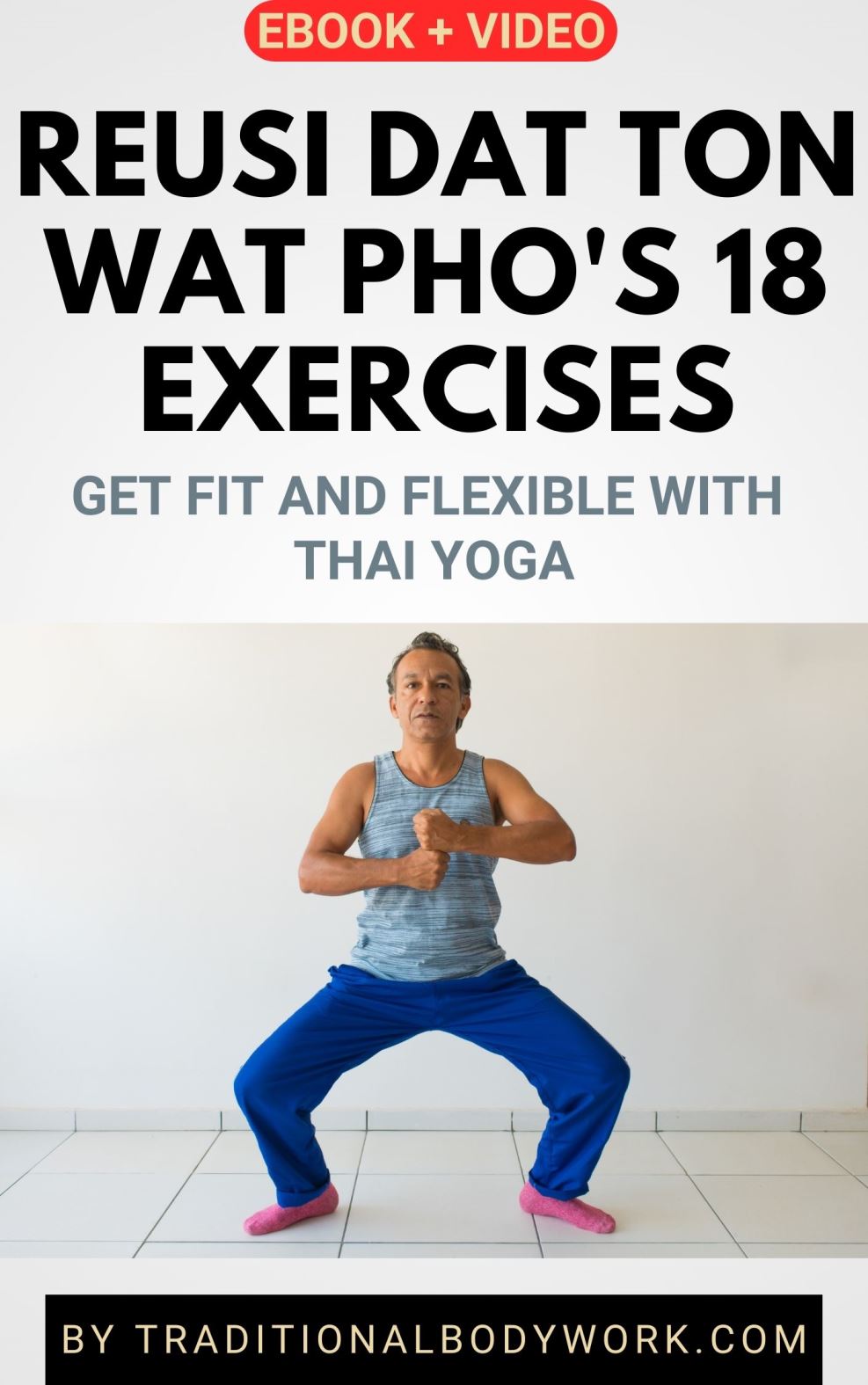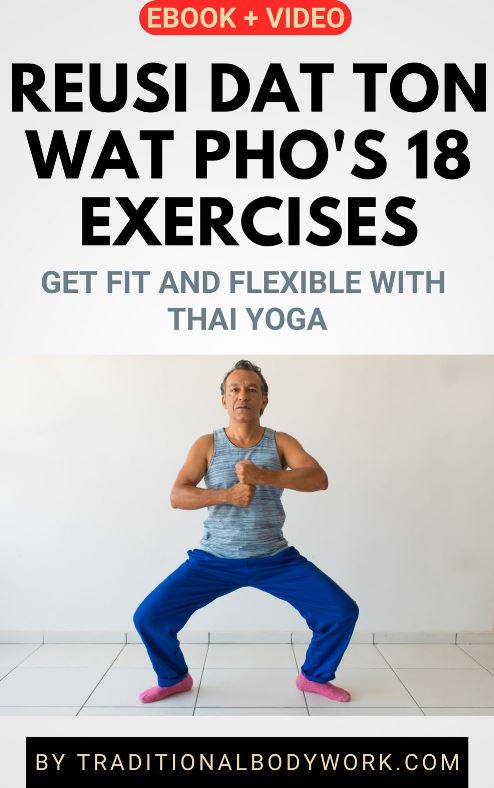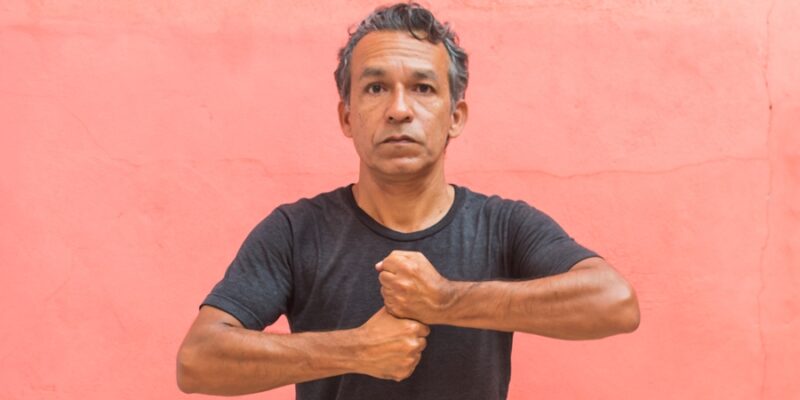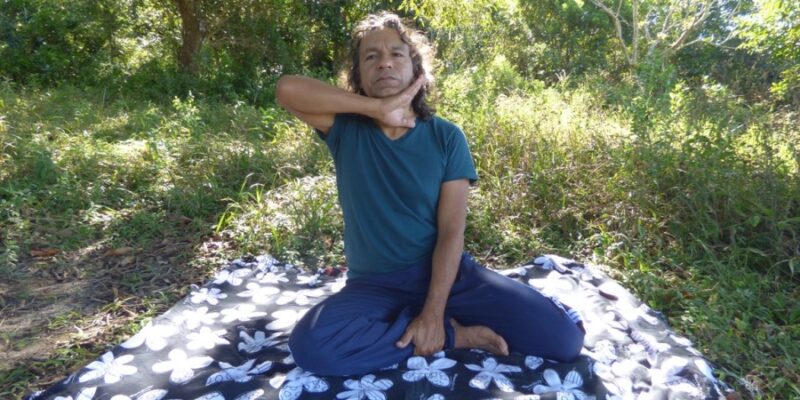
Reusi Dat Ton (Thai Yoga Self-Stretching and Self-Massage) boasts a variety of sitting, standing, and lying exercises, pose sequences, dynamic movements, and breathing methods, among some other characteristics.
Each category of exercises asks for certain precautions and contraindications to be taken into account, and in this post we’ll take a look at the various things you should keep in mind. But, first of all, if you’re not sure if you can, should, or are health-wise allowed to do (certain) Rue-Si Datton exercises, please consult your physician or any other medical professional first.

In any case, be very careful with or avoid exercises that may challenge the following health issues: chronic shoulder pains, severe neck problems, vertigo and unstable blood pressure, standing balance problems, herniated, bulging or damaged spinal discs, damaged spinal vertebrae, ankle joint instability, carpal tunnel syndrome, osteoarthritis of the knees or other knee problems, brachial plexus injury, and vertebrobasilar insufficiency.
Also be careful after a (recent) hip, foot or knee operation, and in any case with putting pressure or strain on artificial joints or artificial organs.
As for the breathing method: Reusi Dat Ton can be carried out with various types of breathing techniques. Please read our dedicated article Rue-Si Dat Ton Breathing Techniques to choose the best and safest way of breathing for you.
General Recommendations
◾ Anyone who starts with Reusi Dat Ton training should start slowly, carefully, without using much force or power, and with a rather short training duration (not more than half an hour), so that the different parts of the body can gradually get used to the movements, poses and positions.
◾ Do not rush, take it easy, only start an exercise session when you’re calm. Always perform the exercises diligently by following (visible and/or written) instructions or demos correctly. Do not carry out Reusi Dat Ton exercises when you’re very tired.
◾ Anyone who starts with Reusi Dat Ton training should preferably start without applying a deep breathing technique while performing the exercises, unless one is accustomed doing so (for instance if one is used to do so with Indian Yoga exercises).
◾ Before starting a Reusi Dat Ton exercise session first warm-up your body. This gradually stimulates your cardiovascular system by raising body temperature and increasing blood flow to your muscles. This will help prevent sudden muscle cramps and spasms, and possible injuries. Warming up can also help to reduce muscle soreness after the session. The warming-up time may take about five minutes.
◾ Do not let others help you get deeper into an exercise/stretch; this may hurt you and can cause injuries. Do the exercises after your own abilities.

◾ If you feel pain when doing an exercise, stop doing the exercise immediately. Don’t force your body.
◾ Typically, each exercise should be repeated several times. Start with repeating each exercise just two times. You may gradually augment the number of repetitions when you are accustomed doing Reusi Dat Ton exercises and feel comfortable with it.
◾ Many exercises in Reusi Dat Ton can be done either standing or sitting. So, if you have problems with standing exercises (for instance if you have balance issues or weak legs), you may choose to do only sitting exercises. If you have pains (for instance knee problems) with sitting exercises that cross the legs, you may choose to sit differently or perform exercises standing.
◾ After finishing a Reusi Dat Ton exercise session carry out some cool-down exercises and relax. Cooling down allows your body temperature, your blood pressure and heart rate to return to their normal levels. The cool-down part may take about five minutes.
◾ To reap the health benefits of Reusi Dat Ton, perform the exercises at least three times a week.


















